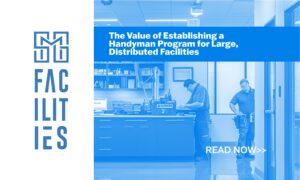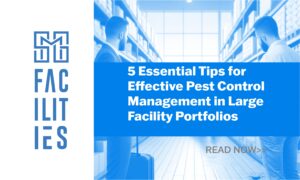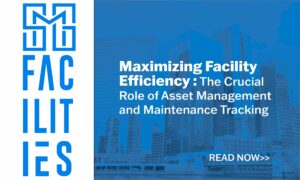Scheduled maintenance is a vital part of productive and sustainable facilities management and upkeep for any commercial entity and the critical assets deployed.. Where many facilities management teams fall short is the implementation of ROI checks and case reviews. Far too few maintenance professionals understand how to track and compare investment returns and how to understand the impact maintenance has on bottom line profits. According to FacilitiesNet, “metrics that measure ROI are geared at aligning the goals of any specific facility project with the business goals of an organization, be it a single department or an enterprise.” With this in mind, there are several ways to be proactive in planning scheduled and preventative maintenance so it is both practical and profitable.
1. Continuously Monitor and Track Asset Performance
There are many aspects to facilities management and maintenance that can benefit from better monitoring of asset performance. One of the most important yet often overlooked is energy and electrical problems. With better performance monitoring and real-time tracking comparison, it becomes easier to see when costs are increasing.
2. Analyze Current Maintenance Needs Versus Expectations to Avoid Adding to the Backlog
Scheduled maintenance is vital to optimal system upkeep and operations, yet it is also important to ensure tasks are not being done just for the sake of doing them. Management must carefully consider budgeting needs for repair work and make sure it is not interfering with or postponing more important work that needs attention.
3. Conduct Regular, Scheduled Maintenance With Thoroughly Vetted Field Service Technicians
Any facility professional knows firsthand how important maintenance reviews and upkeep are to the company as a whole. They also understand the value of routine maintenance and working towards goals with the help of skilled and experienced technicians and experts. Checks and repairs need to add value to the system overall.
4. Use Analytics to Understand Why Your Equipment Fails and How to Get More Value From It
Scheduled maintenance and repair work relies heavily upon ongoing analytics to be truly beneficial to facility managers’ checklists. Knowing when equipment and systems tend to fail, why it happens, and how it can be avoided are primary goals for management teams. This insight comes from real-time data analytics and evaluation.
5. Know the Specifications for Scheduled, Preventive Maintenance
Dealing with risks of commercial property damage requires close adherence to all suggested manufacturer recommendations. Additional servicing may be needed if environmental factors cause wear and tear to occur faster. Things such as dust, wind, rain, extreme temperatures, and other factors can affect routine maintenance scheduling.
6. Recognize That On-Demand, Unplanned Maintenance May Still Occur, Budgeting Accordingly
Even with the best attempts to look ahead and plan scheduled maintenance accordingly, things will still happen unexpectedly. New issues may arise, problems may need to be addressed more quickly, and other factors can complicate matters. Budgeting for these unexpected maintenance needs is a must for facilities management success.
Boost Planning Schedule Maintenance With the Right Facilities Management Partner
Many facility managers and maintenance teams today know that predictive planning and upkeep are an important part of their job. Facilities management KPIs can help improve repair and maintenance protocols from start to finish. However, most lack the skills and insight to fully capitalize on the savings effectively scheduled maintenance can bring. It is easy to boost ROI and keep maintenance and repairs on track with the right facilities management partner. There are many ways commercial facilities management teams can remain proactive in planning scheduled and preventative maintenance. Contact SMG Facility Services today to learn more about being proactive with scheduled maintenance and repairs.





